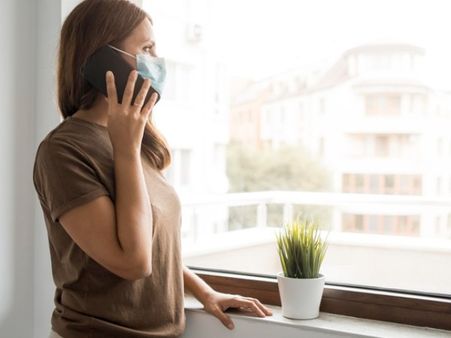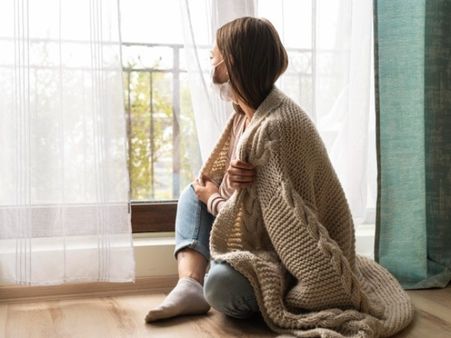Just In
- 30 min ago

- 7 hrs ago

- 8 hrs ago

- 11 hrs ago

Don't Miss
- Movies
 Kiran Rao Had 'A Lot Of Miscarriages', Aamir Khan's Ex Wife Shares Personal & Physical Battles
Kiran Rao Had 'A Lot Of Miscarriages', Aamir Khan's Ex Wife Shares Personal & Physical Battles - Sports
 IPL 2024: Rishabh Pant - The Babysitter! Fans adore Delhi Capitals captain after viral video with Kids
IPL 2024: Rishabh Pant - The Babysitter! Fans adore Delhi Capitals captain after viral video with Kids - Finance
 8 Tata Group Stocks To Buy That Will Pay Dividends Soon, Q4 In Focus; Are You Invested?
8 Tata Group Stocks To Buy That Will Pay Dividends Soon, Q4 In Focus; Are You Invested? - News
 Iran Embassy In Paris Cordoned Off Following Reports Of Suspect With Explosives
Iran Embassy In Paris Cordoned Off Following Reports Of Suspect With Explosives - Automobiles
 Suzuki Swift Hatchback Scores 4 Star Safety Rating At JNCAP – ADAS, New Engine & More
Suzuki Swift Hatchback Scores 4 Star Safety Rating At JNCAP – ADAS, New Engine & More - Education
 NLSIU Announces the Rajiv K. Luthra Foundation Grant
NLSIU Announces the Rajiv K. Luthra Foundation Grant - Technology
 Dell Introduces AI-Powered Laptops and Mobile Workstations for Enterprises in India
Dell Introduces AI-Powered Laptops and Mobile Workstations for Enterprises in India - Travel
 Journey From Delhi To Ooty: Top Transport Options And Attractions
Journey From Delhi To Ooty: Top Transport Options And Attractions
COVID-19: When Should A COVID Positive Person Seek Hospitalisation? Guidelines For Home Isolation
On Monday, the Union health ministry issued a statement stressing the warning signs aimed at COVID-19 patients and when patients need to stop exercising home isolation and get hospitalised.
The statement comes at a time when hospitals are congested with COVID patients due to a massive surge in cases across the country, which has also led shortage of ICU beds, the oxygen supply in hospitals [1].
According to reports, as many as 3,68,147 more people tested positive for COVID-19 in the last 24 hours in the country, bringing the total cases to 20,665,148. However, there has been a minimal decline in new infections as the country recorded over 4 lakh cases on Saturday [2].
According to the Union health ministry, below mentioned are the warning signs which indicate when patients infected with COVID-19 disease need to stop exercising home isolation and get hospitalised.

COVID-19 Symptoms And Warning Signs Listed By The Health Ministry
- If a COVID-19 positive patient's oxygen level or saturation is falling.
- If the person is experiencing excessive fatigue.
- When the oxygen saturation level decreases to 93 or less, the individual can faint.
You can check your oxygen levels using a pulse oximeter, a small, clip-like device that can be put on a finger. It can help you keep an eye on your oxygen saturation level or the oxygen levels in your blood [3].
In the last week, the health ministry revised the home isolation rules of mild and asymptomatic Covid-19 patients. As per those guidelines, the patients who are clinically assigned to be mild /asymptomatic are recommended for home isolation [4].

Guidelines For Home Isolation As Released By The Health Ministry
1. When is a COVID-19 patient eligible for home isolation?
- The patient should be clinically assigned as a mild/ asymptomatic case by the treating Medical Officer.
- Such cases should have the requisite facility at their residence for self-isolation and for quarantining the family contacts.
- A caregiver should be available to provide care on a 24 x7 basis. A communication link between the caregiver and hospital is a prerequisite for the entire duration of home isolation.
- Elderly patients aged more than 60 years and those with co-morbid conditions such as hypertension, diabetes, heart disease, chronic lung/liver/ kidney disease, cerebrovascular disease etc., shall only be allowed home isolation after proper evaluation by the treating medical officer [5].
- Patients suffering from immune-compromised status (HIV, transplant recipients, cancer therapy etc.) are not recommended for home isolation and shall only be allowed home isolation after proper evaluation by the treating medical officer.
- The caregiver and all close contacts of such cases should take hydroxychloroquine prophylaxis as per protocol and as prescribed by the treating medical officer.


2. What are the instructions for COVID-19 patients in home isolation?
- The patient must isolate himself from other household members and stay in the identified room and away from other people in the home, especially elderlies and co-morbid conditions like hypertension, cardiovascular disease, renal disease, etc.
- The patient should be kept in a well-ventilated room with cross ventilation, and windows should be kept open to allow fresh air to come in.
- The patient should always use a triple-layer medical mask. Discard mask after 8 hours of use or earlier if they become wet or visibly soiled. In the event of the caregiver entering the room, both caregiver and patient may consider using N 95 mask.
- Mask should be discarded only after disinfecting it with 1 per cent Sodium Hypochlorite.
- The patient must take rest and drink a lot of fluids to maintain adequate hydration.
- Always follow respiratory etiquette [6].
- Frequently handwash with soap and water for at least 40 seconds or clean with an alcohol-based sanitiser.
- Do not share personal items with other people in the household.
- Ensure cleaning of surfaces in the room that are touched often (tabletops, doorknobs, handles, etc.) with 1 per cent hypochlorite solution.
- Self-monitoring of blood oxygen saturation with a pulse oximeter is strongly advised.
- The patient will self-monitor his/her health with daily temperature monitoring and report promptly if any deterioration of symptom as given below is noticed.


3. When should a COVID-19 patient seek medical attention?
Immediate medical attention must be sought if serious signs or symptoms develop, as mentioned below.
- Difficulty in breathing
- Dip in oxygen saturation (SpO2 < 94 per cent on room air)
- Persistent pain/pressure in the chest
- Mental confusion or inability to arouse [7]

4. What are the treatments safe for patients with mild /asymptomatic disease in home isolation?
- Patients must be in communication with a treating physician and promptly report in case of any deterioration.
- Continue the medications for other co-morbid illness after consulting the treating physician.
- Patients to follow symptomatic management for fever, running nose and cough, as warranted.
- Patients may perform warm water gargles or take steam inhalation twice a day.
- Suppose fever is not controlled with a maximum dose of Tab. Paracetamol 650mg four times a day, consult the treating doctor who may consider advising other drugs like a non-steroidal anti-inflammatory drug (NSAID) (ex: Tab. Naproxen 250 mg twice a day).
- Consider Tab Ivermectin (200 mcg/kg once a day, to be taken empty stomach) for 3 to 5 days.
- Inhalational Budesonide (given via inhalers with spacer at a dose of 800 mcg twice daily for 5 to 7days) to be given if symptoms (fever and/or cough) are persistent beyond five days of disease onset.
- The decision to administer Remdesivir or any other investigational therapy must be taken by a medical professional and administered only in a hospital setting. Do not attempt to procure or administer Remdesivir at home.
- Systemic oral steroids not indicated in mild disease. If symptoms persist beyond seven days (persistent fever, worsening cough etc.), consult the treating doctor for treatment with low dose oral steroids.
- In case of falling oxygen saturation or shortness of breath, the person should require hospital admission and seek immediate consultation from their treating physician/surveillance team.

5. When should a COVID-19 patient discontinue home isolation?
According to the health ministry, "a patient under home isolation will stand discharged and end isolation after at least ten days have passed from the onset of symptoms (or from date of sampling for asymptomatic cases) and no fever for three days. There is no need for testing after the home isolation period is over.


On A Final Note…
Wear a double mask, continue practising social and physical distancing, sanitising and avoid going out and inviting people home to curb the spread of the viral infection.
Stay Home. Stay Safe. Double Mask
-
 pregnancy parentingMysterious Pneumonia Outbreak In China: What Are The Long-Term Effects Of Pneumonia In Children?
pregnancy parentingMysterious Pneumonia Outbreak In China: What Are The Long-Term Effects Of Pneumonia In Children? -
 healthCan You Get Back COVID-Related Loss Of Sense Of Smell And Taste (Parosmia)? Looks Like You Can!
healthCan You Get Back COVID-Related Loss Of Sense Of Smell And Taste (Parosmia)? Looks Like You Can! -
 healthDid Covid-10 Vaccination Increase Risk Of Sudden Deaths In Young Adults? ICMR Finds This..
healthDid Covid-10 Vaccination Increase Risk Of Sudden Deaths In Young Adults? ICMR Finds This.. -
 wellnessDelhi Air Pollution, Air Quality Very Poor: Do Covid Masks Help Reduce Pollution Side Effects?
wellnessDelhi Air Pollution, Air Quality Very Poor: Do Covid Masks Help Reduce Pollution Side Effects? -
 healthNobel Prize 2023: Scientists Behind The COVID-19 mRNA Vaccines Wins
healthNobel Prize 2023: Scientists Behind The COVID-19 mRNA Vaccines Wins -
 healthWhat Is Disease X? 20 Times More Deadlier Than Covid 19; Can Cause 50 Million Deaths, Does It Have Vaccine?
healthWhat Is Disease X? 20 Times More Deadlier Than Covid 19; Can Cause 50 Million Deaths, Does It Have Vaccine? -
 healthCOVID-19 Vaccines and Heart Attacks: New Studies Show Different Results; What Are They?
healthCOVID-19 Vaccines and Heart Attacks: New Studies Show Different Results; What Are They? -
 healthDo You Pick Your Nose? Stop! It Can Increase COVID Risk
healthDo You Pick Your Nose? Stop! It Can Increase COVID Risk -
 healthEris Variant: WHO Alarms New Covid Wave; Should India Be Concerned About This Pandemic
healthEris Variant: WHO Alarms New Covid Wave; Should India Be Concerned About This Pandemic -
 healthVitamin D Deficiency Linked With Increased Risk Of Long COVID
healthVitamin D Deficiency Linked With Increased Risk Of Long COVID -
 healthCOVID Surge In India: Do You Need A COVID-19 Booster Shot?
healthCOVID Surge In India: Do You Need A COVID-19 Booster Shot? -
 healthCOVID-19: IMA Cites 3 Reasons Behind Recent Surge In Covid-19 Cases: What Are They?
healthCOVID-19: IMA Cites 3 Reasons Behind Recent Surge In Covid-19 Cases: What Are They?


 Click it and Unblock the Notifications
Click it and Unblock the Notifications



